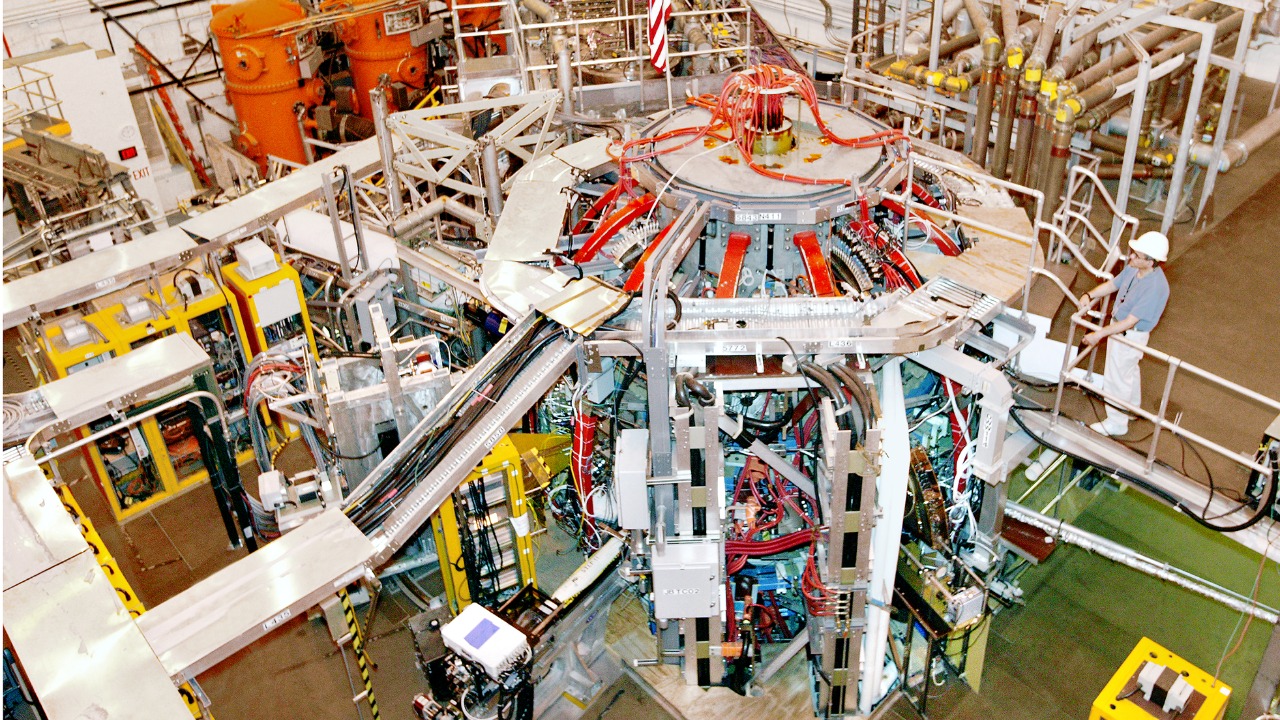
UK engineers at Tokamak Energy have reached a groundbreaking milestone in fusion research by successfully controlling fusion plasma in a spherical tokamak using innovative 3D magnetic coils. This achievement marks a significant advancement in the quest for practical fusion energy, building on the company’s previous success in reaching a 15 million degree fusion temperature milestone in 2018. These developments highlight the steady progress being made toward harnessing fusion energy as a viable power source.
The Spherical Tokamak Design
Spherical tokamaks represent a unique approach to fusion reactor design, characterized by their compact and efficient shape compared to traditional tokamaks. This design allows for more effective plasma confinement, which is crucial for sustaining the high temperatures and pressures needed for fusion reactions. However, maintaining stable plasma within these devices poses significant challenges, primarily due to the need for precise magnetic field shaping to prevent disruptions that can destabilize the plasma.
UK engineers have addressed these challenges through targeted innovations, culminating in the recent achievement of taming fusion plasma in a spherical tokamak for the first time. This breakthrough was made possible by the strategic use of 3D magnetic coils, which provide the necessary control over the magnetic fields to maintain plasma stability. This advancement not only demonstrates the potential of spherical tokamaks in fusion research but also sets a new standard for future experiments in the field.
Innovation of 3D Magnetic Coils
The engineering of 3D magnetic coils is a pivotal innovation in the field of fusion research. Unlike conventional 2D systems, these coils feature a non-planar structure that allows for dynamic adjustment of magnetic fields around the plasma. This capability is crucial for correcting error fields and enhancing plasma stability, particularly in the challenging environment of a spherical tokamak.
The technical advantages of 3D coils are significant, offering improved control over the plasma and reducing the likelihood of disruptions. This precise control was demonstrated by UK engineers in their recent milestone, showcasing the effectiveness of these coils in maintaining stable plasma conditions. By enabling more accurate manipulation of magnetic fields, 3D coils are paving the way for more reliable and efficient fusion experiments.
Tokamak Energy’s Milestone Achievements
Tokamak Energy’s journey toward practical fusion energy has been marked by significant milestones, including the achievement of a 15 million degree fusion temperature on June 6, 2018. This accomplishment was a foundational step in high-temperature plasma generation, providing critical data for advancing plasma control techniques in subsequent experiments. The insights gained from this milestone have been instrumental in the development of new technologies and methods for controlling fusion plasma.
The 2018 temperature record laid the groundwork for the recent success in plasma control, demonstrating the evolutionary progress made by the UK-based team in fusion technology. By building on past achievements, Tokamak Energy has been able to refine their approach and push the boundaries of what is possible in fusion research. This continuous advancement underscores the potential for achieving practical fusion energy in the near future.
Implications for Fusion Research
The successful control of fusion plasma in a spherical tokamak using 3D magnetic coils has far-reaching implications for the future of fusion research. This breakthrough could significantly accelerate the path to commercial fusion power plants, offering a cleaner and more sustainable energy source. The ability to maintain stable plasma conditions is a critical step toward developing scalable and efficient reactors that can meet the growing global demand for energy.
Beyond energy production, the advancements in plasma control have potential applications in other fields, such as materials science. Sustained high-temperature plasmas can lead to new discoveries and innovations in material properties and processing techniques. The broader impact of this milestone on global fusion efforts is substantial, positioning UK engineers’ achievement as a key enabler for future developments in the field.
By demonstrating the feasibility of controlling fusion plasma in a spherical tokamak, UK engineers have set a new benchmark for fusion research. This achievement not only highlights the potential of spherical tokamaks but also reinforces the importance of continued innovation and collaboration in the pursuit of practical fusion energy. As the world seeks sustainable solutions to its energy challenges, the progress made by Tokamak Energy offers a promising glimpse into the future of fusion technology.